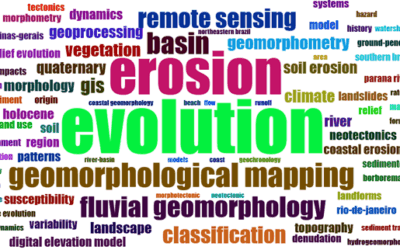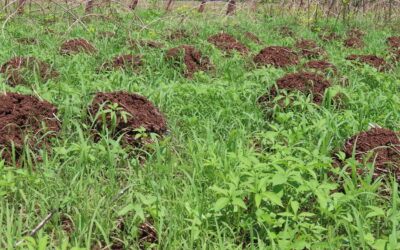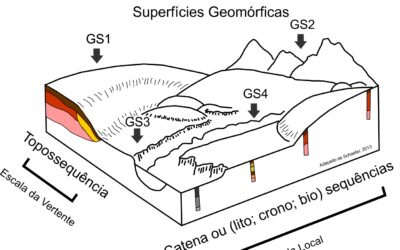Amid the dense Atlantic Forest of the Serra do Mar in southeastern Brazil, a herbaceous-shrubby grassland stands out in an otherwise forested landscape. Surrounded by lush ombrophilous forest, the Campo do Veludo defies the region’s environmental logic. Why does the forest fail to reclaim this clearing? What explains the persistence of a campestre vegetation enclave in one of the world’s most biodiverse tropical biomes?
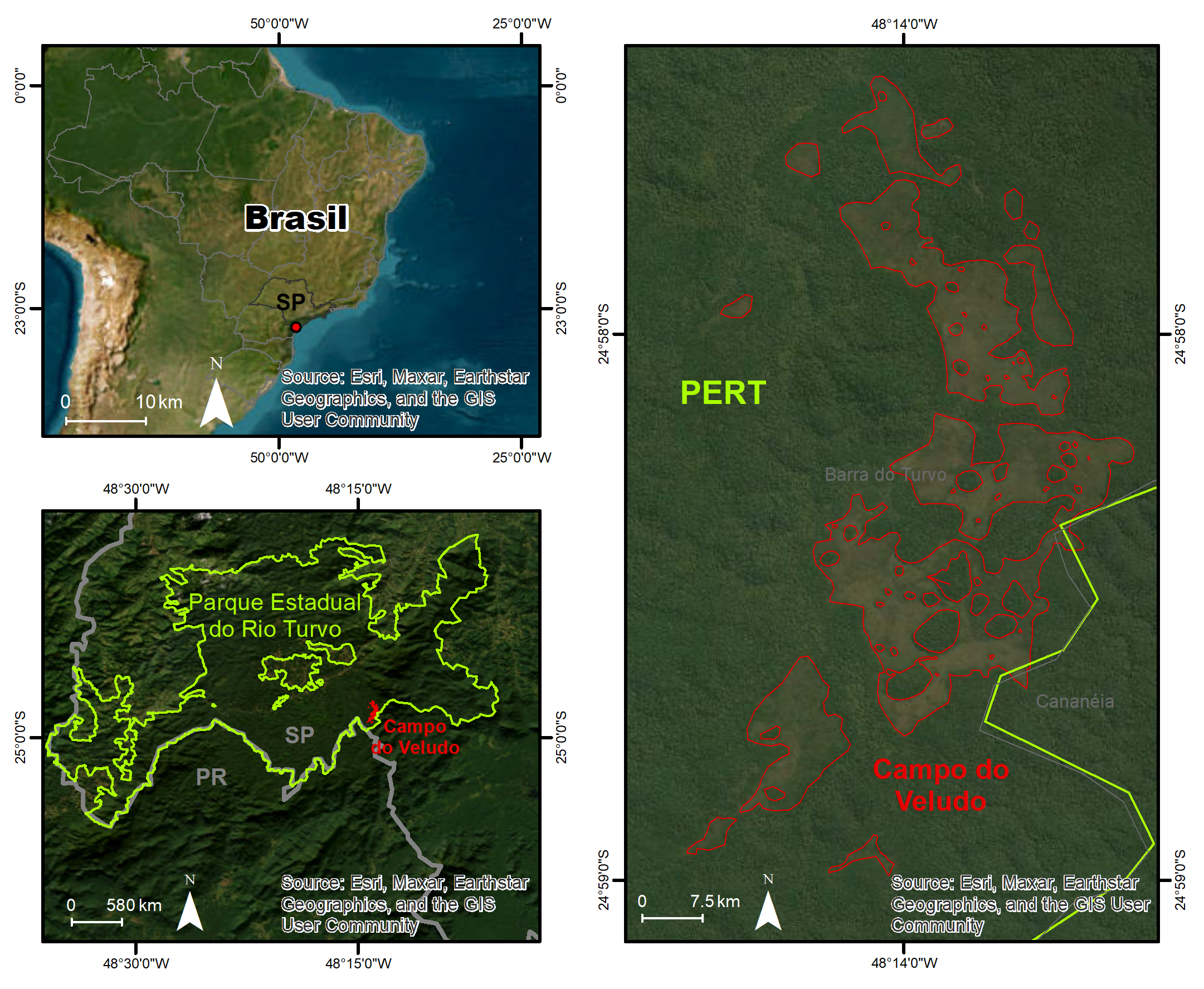
[learn_more caption="Figure 1 – Location of the Campo do Veludo within the Rio Turvo State Park, São Paulo, Brazil." state="open"] This figure presents three maps: the first (top left) shows the location of São Paulo state in Brazil; the second (bottom left) indicates the approximate position of the Campo do Veludo within the park; and the third (right) details its spatial distribution amidst the forest cover of the Atlantic Forest.
Source: Schacht & Alves, 2024.[/learn_more]
The Enigma of Campo do Veludo
These questions motivated the study by Grace Bungenstab Alves (UFBA) and Gustavo Luis Schacht (UFRB), who sought to understand the environmental factors sustaining this exceptional landscape within the Rio Turvo State Park. By integrating soil, topographic, and vegetation data, the research reveals that soil properties, especially Spodosols, play a decisive role in shaping local vegetation patterns.
Soil as an Ecological Filter
The team identified shallow, acidic, poorly drained soils with high organic matter content and a perched water table. These conditions restrict plant diversity and favor species adapted to waterlogging and low nutrient availability, such as Sphagnum mosses, carnivorous Drosera, and stunted shrubs of the genus Psidium. The area thus forms a biogeographic enclave shaped by pedological constraints, marked by abrupt transitions between campestre vegetation and ombrophilous forest as the underlying substrate changes.
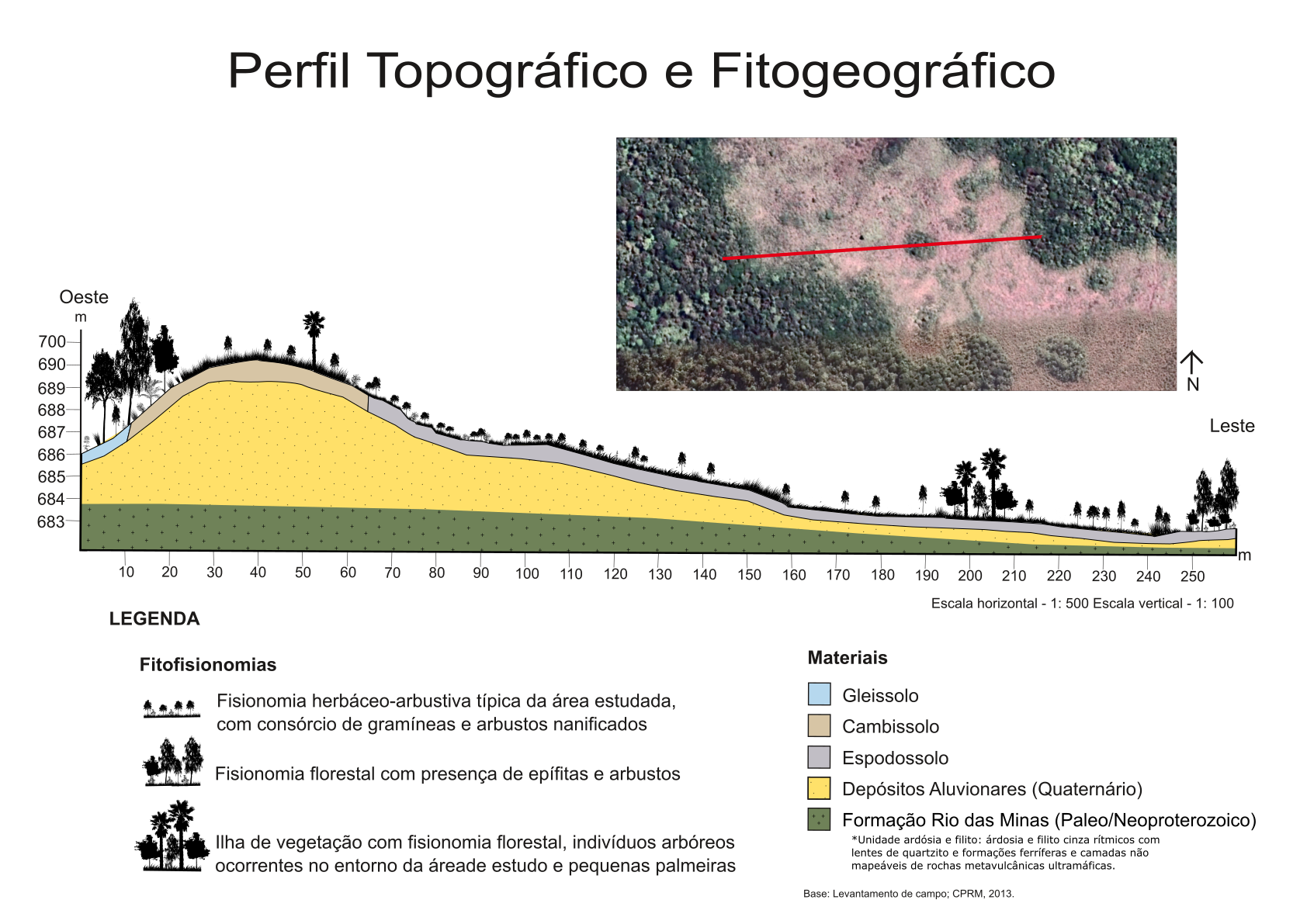
[learn_more caption="Figure 2 – Topographic and phytogeographic profile of the Campo do Veludo, Rio Turvo State Park (SP)." state="open"] This west–east cross-section highlights changes in vegetation structure and soil types, including Spodosols, Gleysols, and Inceptisols associated with Quaternary alluvial deposits. The aerial image above the profile shows the transect’s path through the landscape.
Source: Schacht & Alves, 2024.[/learn_more]
Accessible description (for visually impaired readers)
Spodosols and Landscapes of Exception
This configuration illustrates a clear case of pedological control over vegetation. The soil acts as an ecological filter, selecting species that tolerate chemical and hydrological stress. As a result, the Campo do Veludo maintains distinctive structural and floristic characteristics, even when surrounded by dense forest.
Connections to the Muçununga Formations
In addition to advancing knowledge on underexplored Atlantic Forest landscapes, the study hypothesizes that the Campo do Veludo may be related to muçununga formations, previously identified only in Espírito Santo and southern Bahia. This would suggest a broader, overlooked continuum of soil-controlled ecosystems in southeastern Brazil.
Scientific Implications and Future Research
The findings underscore the importance of pedogeomorphological analyses in understanding the mechanisms sustaining tropical landscape diversity. The study also opens new pathways for investigating landscape evolution under varying climatic regimes, including the potential persistence of relict formations shaped by past environmental conditions.
📄 Reference:
SCHACHT, G. L.; ALVES, G. B. Controle pedológico na vegetação campestre da Serra do Mar: o caso do Parque Estadual do Rio Turvo, SP (Brasil). Geografia Ensino & Pesquisa, v. 28, e84638, 2024.
Available at:
https://doi.org/10.5902/2236499484638
https://www.researchgate.net/publication/382997858_Controle_pedologico_na_vegetacao_campestre_da_Serra_do_Mar_o_caso_do_Parque_Estadual_do_Rio_Turvo_SP_Brasil
📌 Explore more content at: https://colapso.ggf.br/blog/



